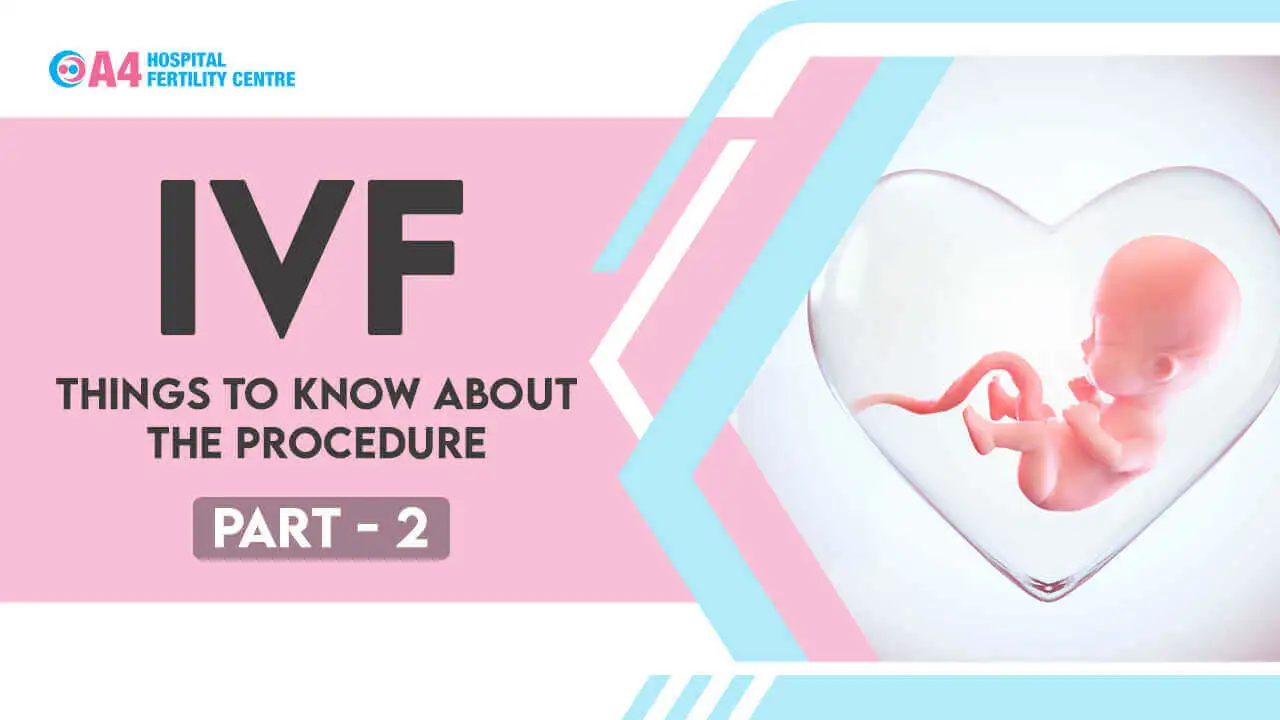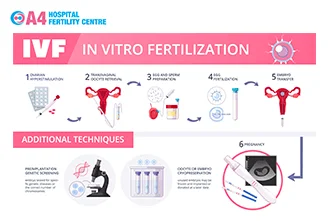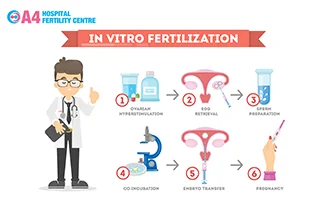
Dr. Aruna Ashok MBBS, MS OG, DNB OG
- Clinical Director

IVF is one of the most advanced procedures in the industry. In-vitro fertilization involves fertilizing the collected sperm and egg in a controlled environment. The fertilized egg is kept in a controlled chemical environment and the embryo is planted in the uterus of the female partner. This has been the most important breakthrough in the field of reproductive medicine. Now we are going to take a look at some of the most frequently asked questions before undertaking an IVF procedure.


The chance of getting a healthy child from IVF or ICSI is very same as that of natural conception (97%), with a 3% chance of getting a baby with a birth anomaly. There is an overall 1% increase in aneuploidies in IVF due to the advanced age of patients undergoing the IVF procedure. When the female partner has an age greater than 38, they have an increased risk of chromosomally abnormal embryos. This is detected by Pre-implantation Genetic Testing (PGT) and not transferring the abnormal embryo. IVF has been in practice for many years now. The first set of children who were born out of IVF is more than 39 years old as of 2022. There are around 15 million babies born worldwide. Studies suggest that babies conceived through IVF are healthier because their genetic abnormalities are removed by the PGT.
Duration of a successful IVF treatment
The stimulation of eggs takes around 10 days. This is the baseline of an IVF process. The egg collection is the next process which is carried out on the twelfth day. The embryo transfer mostly happens in the same cycle, 3 to 5 days after the egg collection process. 14 days after the embryo transfer, the pregnancy blood test is done. So, when a fresh embryo transfer happens, the duration is 4 weeks. If the patient is not ready or fit for making a fresh embryo transfer, we go for a frozen embryo transfer. Frozen embryo transfer is done after 30-45 days. In Frozen embryo Transfer, injections are not involved. We prescribe only oral medicine. A pregnancy test is done usually 14 days after performing the Frozen Embryo Transfer. With great Fertility clinics such as A4, the hospitals guarantee conception in 100 days.
Injection provides the necessary nutrients and chemicals for IVF procedures. People in western countries incorporate self-injection procedures. Self-injection is a simple procedure. If you follow the proper instructions then the self-injection procedure is cost-effective and efficient. There are various instructions that you should follow before taking up the self-injection procedure.
The injections should be stored in cold storage at a temperature of 2-8 degrees Celsius. When the temperature is not maintained, the potency of the injection gets lost.
The injections should be placed in the topmost tray of the fridge. (Not in the Freezer)
It is not advisable to open and close the fridge frequently. The frequent opening and closing of the fridge might cause the temperature to vary.
The injections should be carried in a box given by the clinic while bringing it to the hospital.
Spilling of injection is not advisable.
In case of doubts, it is advisable to call the hospital for clarification.
In the case of using pen-type injections, the remaining injection should be returned to the hospital for maintenance.
It is a necessity to check the dilution of the injection before using it.
Separate needles for each injection are a necessity to be carried out by the patients.
It is safe, cost-effective, and simple to take up the injections at home if the above-mentioned procedures are carried out accordingly.
Apart from taking up the injections, it is very important to take up the trigger injection. This is the most important step involved in the ICSI cycle. The trigger timing is essential and is decided exactly 36 hours before the Ovum pickup procedure. Hence, the timing has to be maintained and the concerned in charge is informed after the receipt of injections with the proper temperature because we might re-use the remaining injections. It is a necessity to communicate to us in case of damages to the vials before injecting procedure. The first thing is to check the prescription of the doctor again before taking up the injection. The time of taking up the injections is of utmost importance.
Fresh embryo transfer is the procedure where the embryo is transferred to the ovaries of the female immediately after embryo formation. Fresh ET is done 5 days after egg collection by transferring the fifth-day embryo. Fresh embryo transfer is carried out only when the hormonal levels and endometrial thickness are favorable without the risk of Hyperstimulation syndrome characterized by fluid collection and protein leakage. Fresh Embryo Transfer is planned in case of patients who have thick endometrium, and no complaints in terms of vital signs. In most hospitals, doctors suggest Frozen Embryo Transfer.
The procedure is carried out 45 days after the OPU. Frozen ET is about transferring embryos in subsequent cycles after egg retrieval. The frozen embryo is thawed 2-3 hours before the transfer to allow it to expand. It is always essential for the patient to sign consent 3 hours before the scheduled time for embryo transfer. The success rate of Fresh Et is around 55-60% and that of Frozen ET is 65-70%. A4 Fertility Hospitals make sure that your IVF procedure yields you the happiness that you strive for. We have maintained the best track record of successful baby deliveries. We are concerned about making happy families. Visit our blogs for getting updates on various fertility-related advancements.